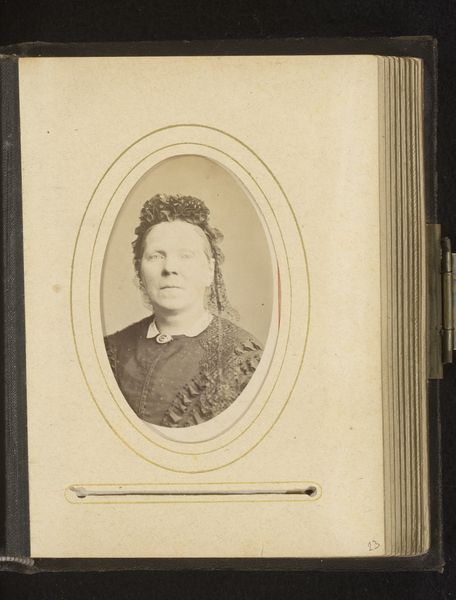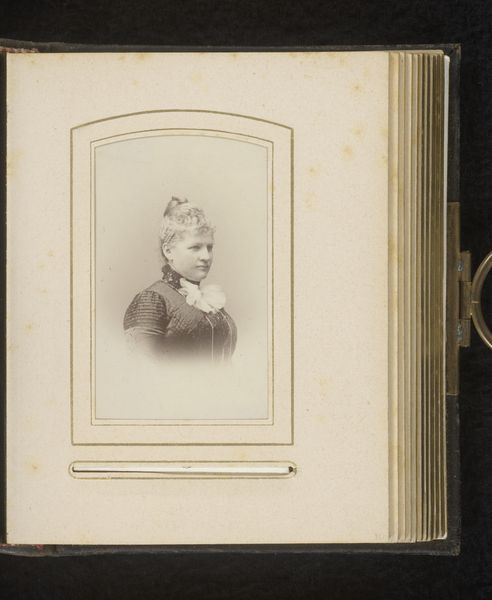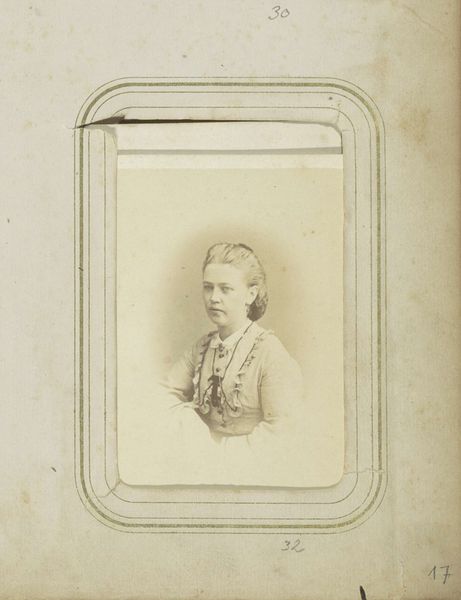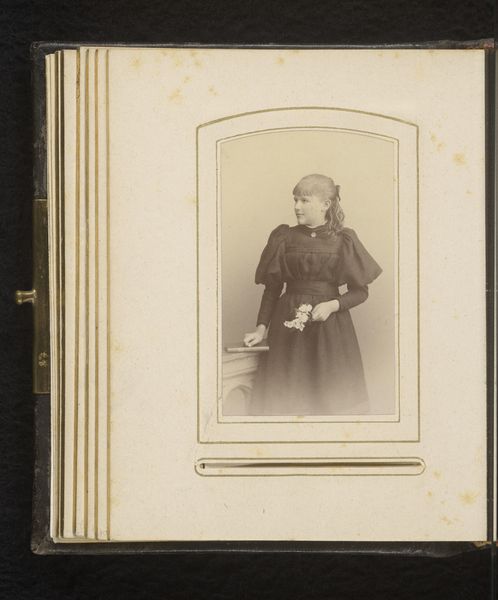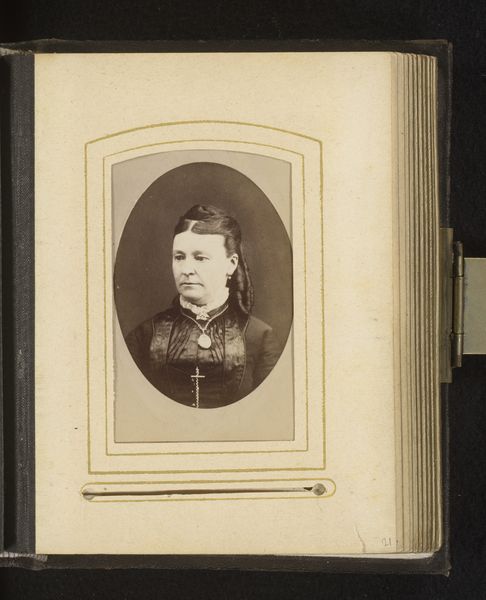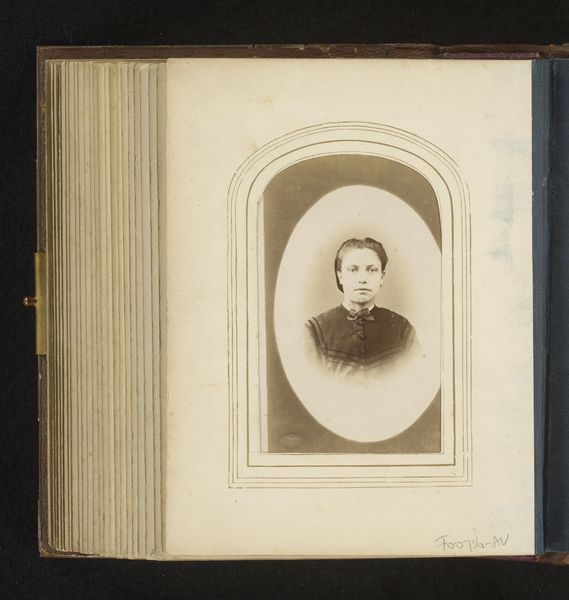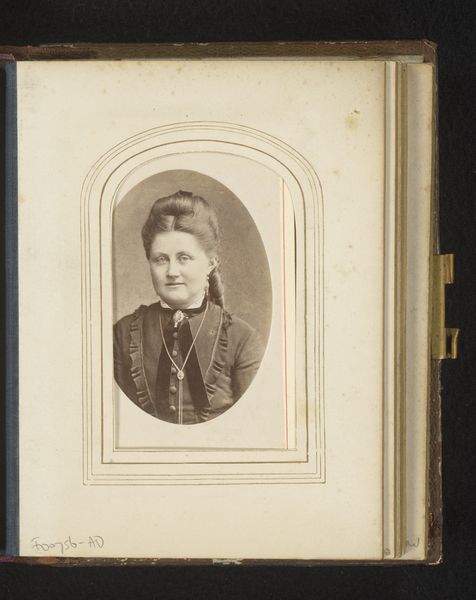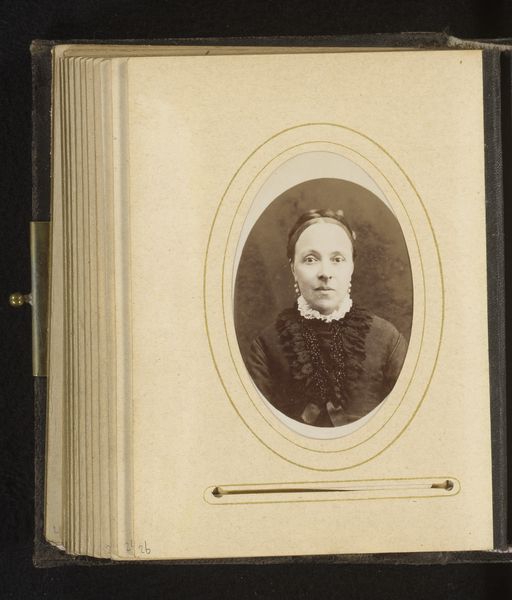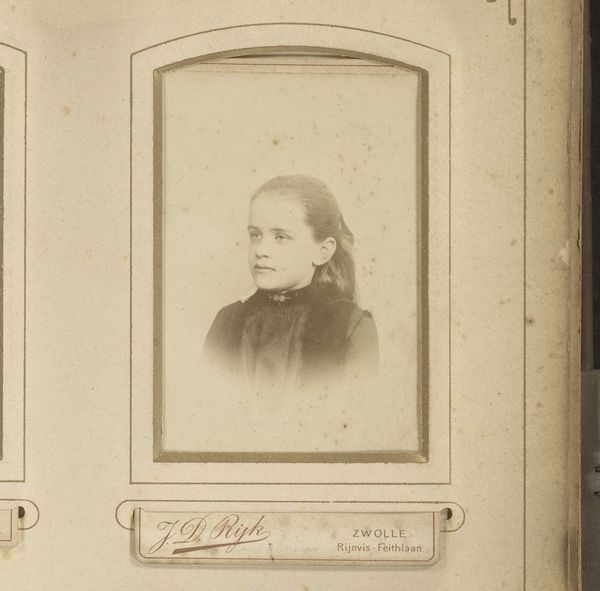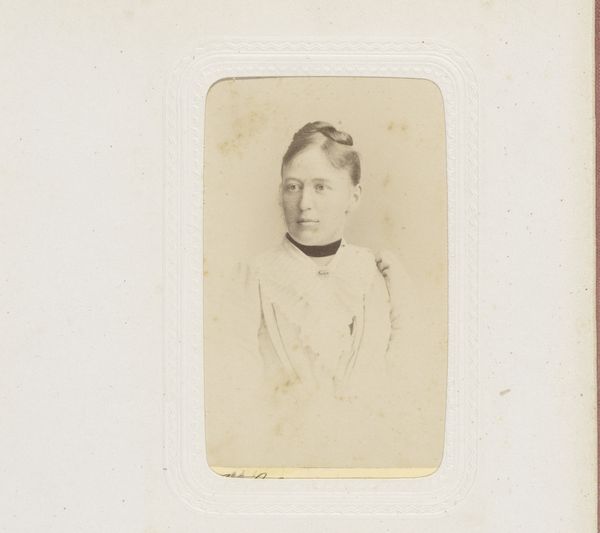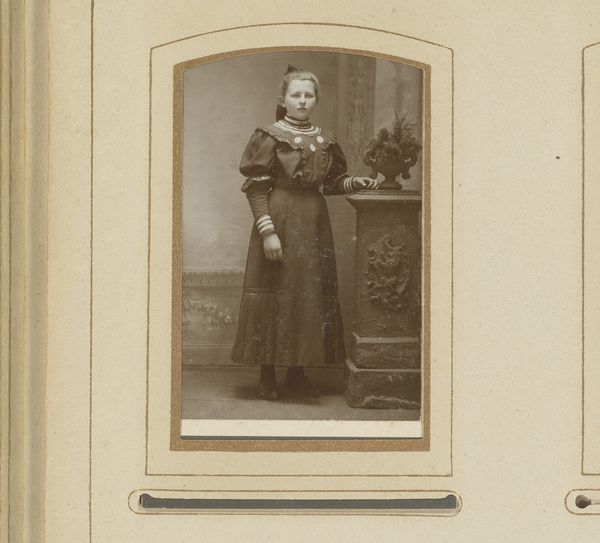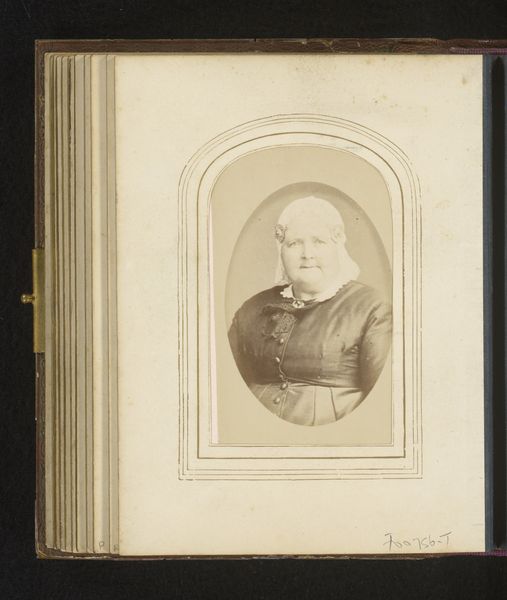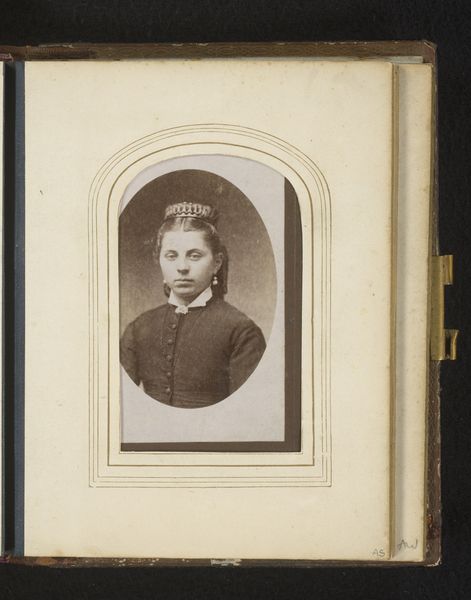
photography, albumen-print
#
portrait
#
photography
#
albumen-print
Dimensions: height 86 mm, width 53 mm
Copyright: Rijks Museum: Open Domain
Editor: Here we have Johannes Gerardus Kramer’s "Portret van een vrouw," dating roughly from 1868 to 1903. It’s an albumen print, sepia-toned and presented in what looks like a bound album. There’s a definite sense of formality about it... What can you tell me about the image itself, but also the material choices made? Curator: It is not merely the “what” of the woman depicted, but how the material processes contribute to our understanding of this image. The albumen print, itself, speaks to a particular social stratum and moment in photographic history, a commercialized process making portraiture available to the growing middle classes. Editor: Interesting! It does seem to suggest something about access and who could participate in image-making. Can you say more? Curator: Consider the labour involved: the photographer, the studio assistants, and the workers producing the albumen paper itself. Each element represents a contribution of skill and labour transforming raw materials into a commodity—a family keepsake and declaration of status. Even the album format emphasizes its value as an object of personal and familial importance, crafted to preserve memory. How does that perspective shift your initial read of “formality?” Editor: That is a fascinating lens! The context surrounding the materials—who made them, for whom, and the value placed upon the final object—suddenly brings a whole new level of meaning to the image, shifting it beyond just the depiction of an individual. Curator: Precisely. Thinking about materiality challenges traditional notions about art's singular creation and reveals the collaborative network of production and consumption. It grounds the image in its historical and social context. Editor: I never considered the albumen print as part of the statement, it makes me see that what is ‘behind’ the image itself holds so much. Thank you. Curator: My pleasure! Remember to always ask "how was it made" when considering a piece of art, to truly unpack its complexity.
Comments
No comments
Be the first to comment and join the conversation on the ultimate creative platform.
